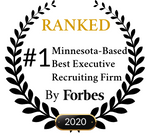As an entrepreneur running a small-but-growing business, your hiring decisions are some of the most critical – and risky – decisions you will make. Every organization, regardless of size, is impacted by every new hire. But the smaller your company, the bigger the impact. Indeed, a study conducted by Guidant Financial and LendingClub found that for small business owners especially, employee recruiting and retention is a challenge in a strong labor market.
So how can you make sure you’re bringing in the right person, every time?Some steps seem obvious: recruit from the best sources, and ask solid interview questions. But above all of that, great hiring also demands that you, as the person holding the bag on your business’ success, approach the process with absolute clarity. Who are you, as an organization? Where do you want to be? What kinds of people do you need onboard to get your company where you’re heading? And how can you bring in the people to help you do that – without risking the joy factor that, hopefully, courses through your team today?
So yes, hiring is hard. And the difference between a great hire and not-bad one can spell the difference between a great organization and one that struggles to hang on. Here are 8 best practices to help you identify, recruit and hire the right candidate for your organization.
1. Write a job description that’s polished, not sugar-coated.
The job description should absolutely put the brightest, shiniest face on the role this person will be fulfilling. But if you oversell (that’s code for exaggerate or outright lie) about anything, you may succeed in hiring a great candidate – only to watch them leave in a huff a few weeks or months later. Be honest and as specific as possible about current challenges that may make the job difficult at times. This not only engenders trust in potential candidates; it also helps top talent self-select. You need someone who sees those challenges as exciting challenges to overcome. Spell out the core responsibilities as well as the daily tasks and deliverables. But always be sure to tie those activities to how this job will be contributing to the overall success of the organization. (When in doubt, remember the compelling story about the 1960s NASA janitor describing his job as helping to put a man on the moon.
2. Seek candidates who can roll with rapid change and evolving priorities.
Do you know who those individuals are? Usually, they’re the people already thriving in another small business. While it’s not always true that big companies attract people who need more role stability and organizational predictability, it’s often true. You need someone who is flexible, not just in the tasks they’re willing to take on – but in the way they think. Can they embrace new ideas? Can they grab the torch and run with it? Use phrases like “fast-moving,” “adaptable,” “wear many hats,” “fast learner,” and “goal-oriented.” And, again, be sure to highlight the fact that you’re a small, dynamic, growing organization. To the right candidate, that’s cool. To the wrong one, that’s scary. And that’s all good.
3. Meet flexibility with flexibility.
Once you’ve found that super dynamic, wonderfully adaptable individual, understand that they’re probably seeking an environment that is equally adaptable. Offering some remote working times, flexible work schedules, and being open to more relaxed workplace rules like dress codes will give you an advantage over other employers. And as long as everyone is meeting the goals, treating each other with respect, and building a better organization, everyone is happy, right?
4. Interview for values and core competencies.
Ask questions that get to the heart of who the candidate is and whether they can pour that heart into your business. Are they team players? Ask about times when they’ve helped solve an organizational challenge. Do you hear a story about their incredible solo achievements? Or do you hear about collaboration, brainstorming, and relying on the strengths of others to come up with a better solution than they could have on their own? Are they super curious about what makes your organization tick? Do they ask smart questions and link your responses to their own goals? Can they thrive in occasional chaos, keeping their eyes on the vision while adapting their approach? And are they good with people? What’s their enthusiasm level for building and maintaining strong relationships with co-workers, customers, and suppliers? How do they learn and do they enjoy learning new things? Listen for innovative approaches to various issues vs a lot of talk about “the right way” to get stuff done.
5. Be true to your organizational values and culture.
You can train for skills. You can’t train for core competencies, attitudes, or even enthusiasm. A proven track record of exponential sales increases or other positive turnarounds can look so good on paper. It’s often terribly tempting for a small business owner to want to bring that person in and have them wave their magic wand. But it just doesn’t work like that. Without compatibility at the values and culture levels, skills and tactics will not only fizzle, but they might also backfire, damaging the morale and mojo of the rest of your team. Don’t just talk about values in an interview. Introduce the candidate to the rest of the team. Consider a group lunch. And keenly observe how the interactions go.
6. Everyone on your team is a stakeholder. Involve them in recruiting.
The smaller the company, the greater the opportunity to engage the team in building the team. With every new role, you think you need to fill, consider first whether you already have someone on board who would be a perfect fit. If it’s a promotion for them, do it. And hire for the job they’re vacating. Having an open dialogue with all of your employees about the roles you aim to fill – before you create a job posting – will help you avoid the resentments that can come with feeling passed over or undervalued. When creating job postings, solicit team input. Definitely include them in the interviewing process. But more importantly, keep the recruiting conversation going year-round. Make it clear that you value your team’s insights, instincts, and observations. And you want them to promote your organization as a great employer whenever they come across someone they perceive as a great potential employee.
7. About Tip #5: that applies to you, too.
Entrepreneurs with great hiring instincts always have their eyes and ears open. From the person who served your sandwich at the local coffee shop to the high-energy, super innovative mom you’ve been getting to know at your kid’s soccer games, always be thinking “How could someone like this make my company better?” And out loud, always be promoting your organization to these people. The next time you have the need and the budget for a new job, you already have a sense of the people you hope to recruit. The same goes for candidates who applied for previous openings but got beat out by the one you hired. Every communication you have with them should be promoting your brand and, if true, re-recruiting their interest for possible future openings.
8. Try on the sweater first.
Whether you include a test project during the interviewing process or you offer a short-term contract before an offer of full-time employment, be sure you give everyone a chance to test out how well this is going to work. By giving yourself and the team the opportunity to work with this person, experience the process together, and gauge the results, you make it far more likely that your full-time offer will stick.
Need help filling a critical role? Your SkyWater recruiter can even take a closer look at your org chart and make sure that you're positioned well for growth. Contact your SkyWater recruiter today.
---
Related Reading:








